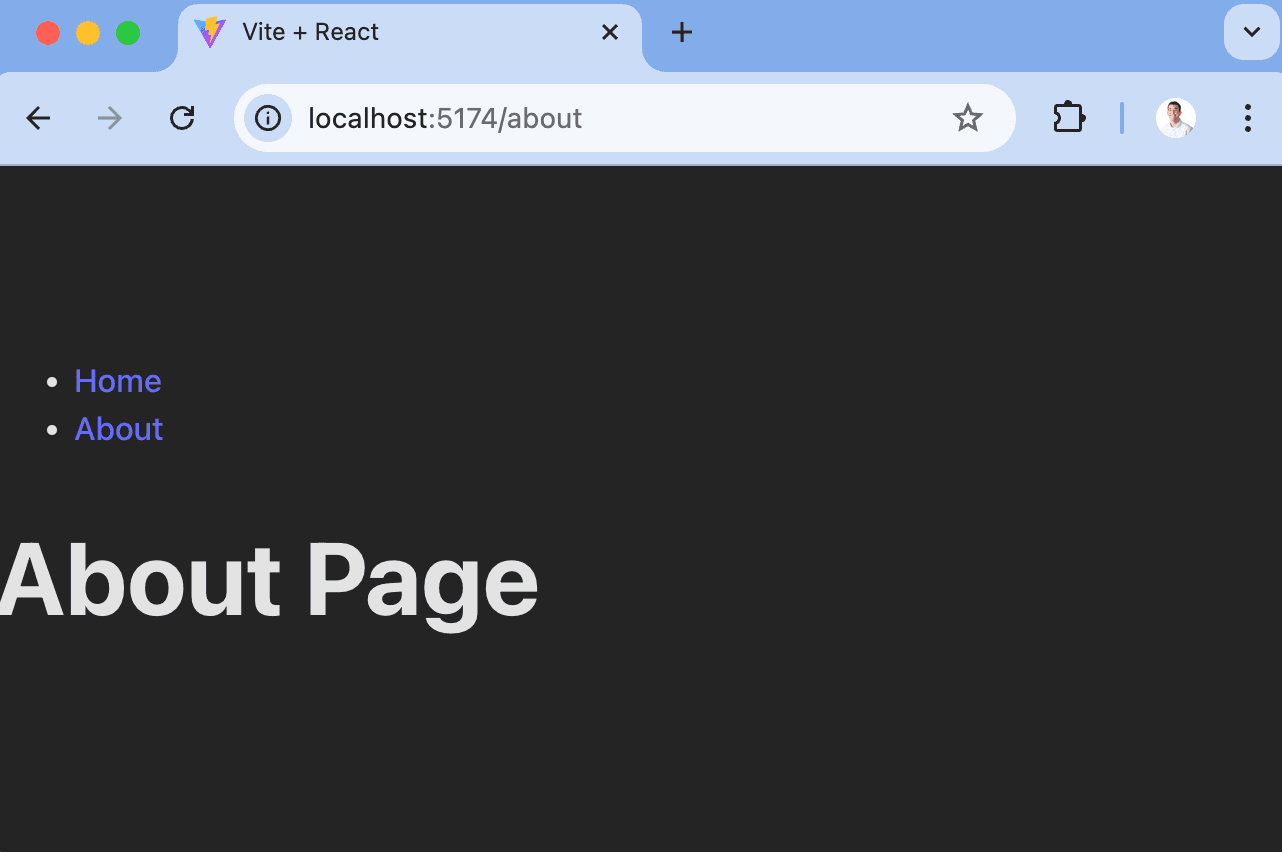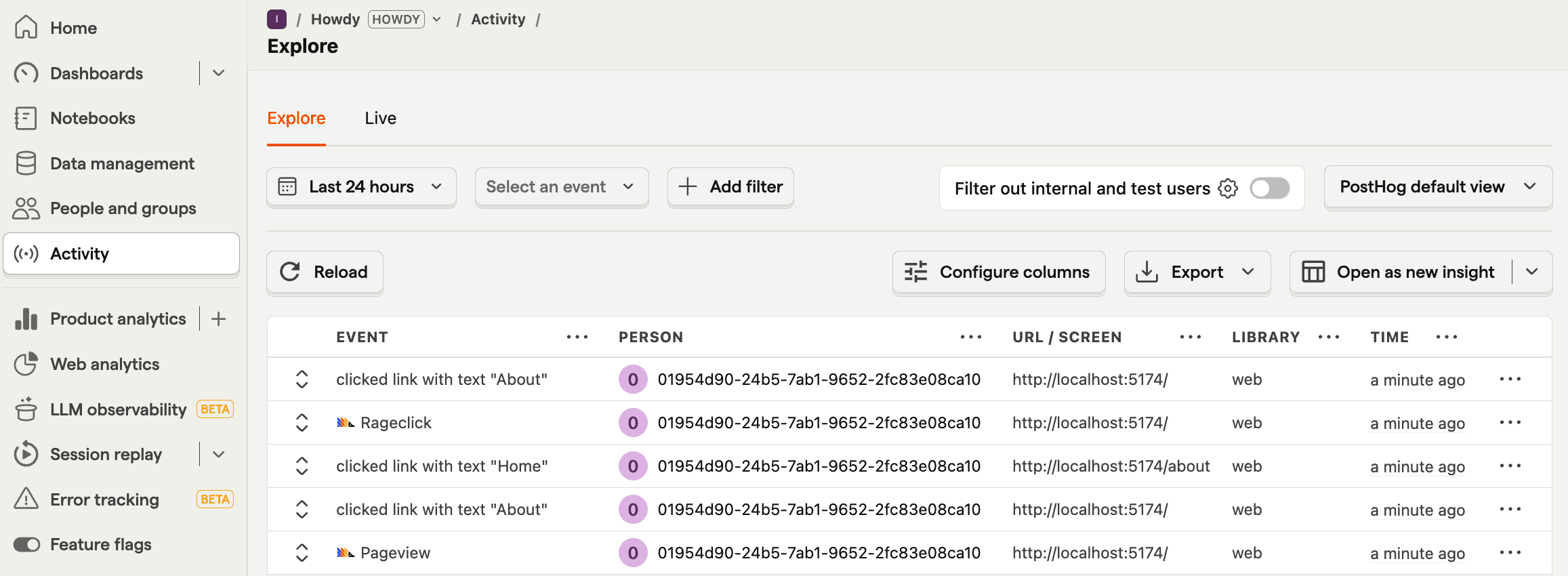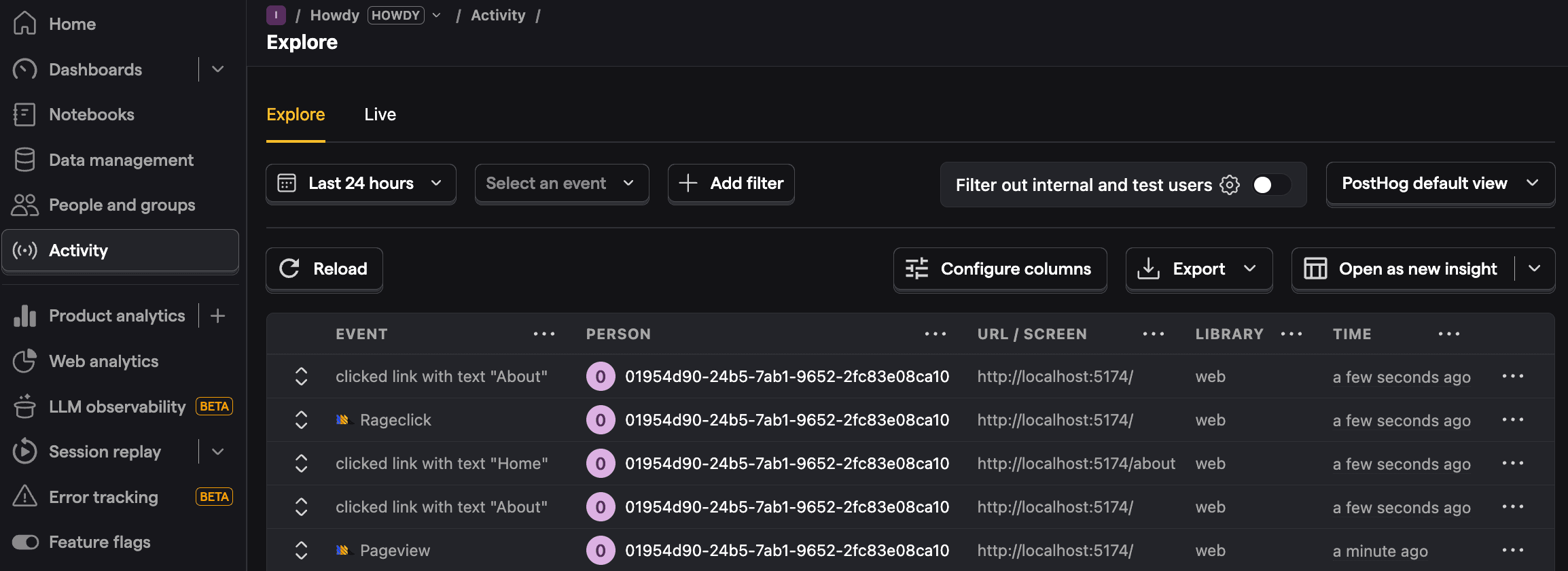How to set up analytics in React
Mar 07, 2025
Product analytics enables you to gather and analyze data about how users interact with your React app. To show you how to set up analytics, in this tutorial we create a basic React app with Vite, add PostHog, and use it to capture pageviews and custom events.
Creating a React app with Vite
To demonstrate the basics of PostHog analytics, we'll create a simple app with two pages and a link to navigate between them.
First, ensure Node.js is installed (version 18.0 or newer). Then create a new React app with Vite:
Next, create two new files HomePage.jsx and AboutPage.jsx in your src directory:
In HomePage.jsx, add the following code:
In AboutPage.jsx, add the following code:
Next, we set up the routing. First, install React Router in your project:
Then, set up the router by replacing the code in App.jsx with the following:
The basic setup is now complete. Run npm run dev to see your app in action.

Adding PostHog
With our app set up, it's time to install and set up PostHog. If you don't have a PostHog instance, you can sign up for free.
First install posthog-js:
Next, import PostHog into src/main.jsx and set up it up using your project API key and host from your project settings. Then we wrap our app with PostHogProvider to access PostHog in any component.
Once you've done this, reload your app and click the links a few times. You should see events appearing in PostHog's activity tab.


Capturing pageviews
You might notice that moving between pages only captures a single pageview event. This is because PostHog only captures pageview events when a page load is fired. Since React creates a single-page app, this only happens once and the React router handles subsequent page changes.
If we want to capture every route change, we must write code to capture pageviews that integrates with the router.
To do this, we create a new component PostHogPageviewTracker. This component combines useLocation with useEffect to capture a pageview whenever the location changes.
First, create a PostHogPageviewTracker.jsx file in your src directory. Then add the following code to it:
Then include this new component in your Router in App.jsx:
Now, every time a user moves between pages, PostHog captures a $pageview event, not just on the first page load.
Lastly, go back to src/main.jsx and make sure to set capture_pageview in the PostHog initialization config to false. This turns off autocaptured pageviews and ensures you won't double-capture pageviews on the first load.
Capturing pageleaves (optional)
Once you disable automatic $pageview captures when calling posthog.init, you'll be disabling automatic $pageleave capture as well. If you want to continue capturing $pageleaves automatically, you can re-enable it.
Capturing custom events
Beyond pageviews, there might be more events you want to capture. To do this, you can capture custom events with PostHog.
To showcase this, update the code in HomePage.jsx to include a button that uses PostHog to capture a home_button_clicked event:
Now when you click the button, PostHog captures the custom home_button_clicked event. Notice that we also added a property user_name to the event. This is helpful for filtering events in PostHog.
Further reading

Subscribe to our newsletter
Product for Engineers
Read by 45,000+ founders and builders.
We'll share your email with Substack
Questions? Ask Max AI.
It's easier than reading through 609 docs articles.
